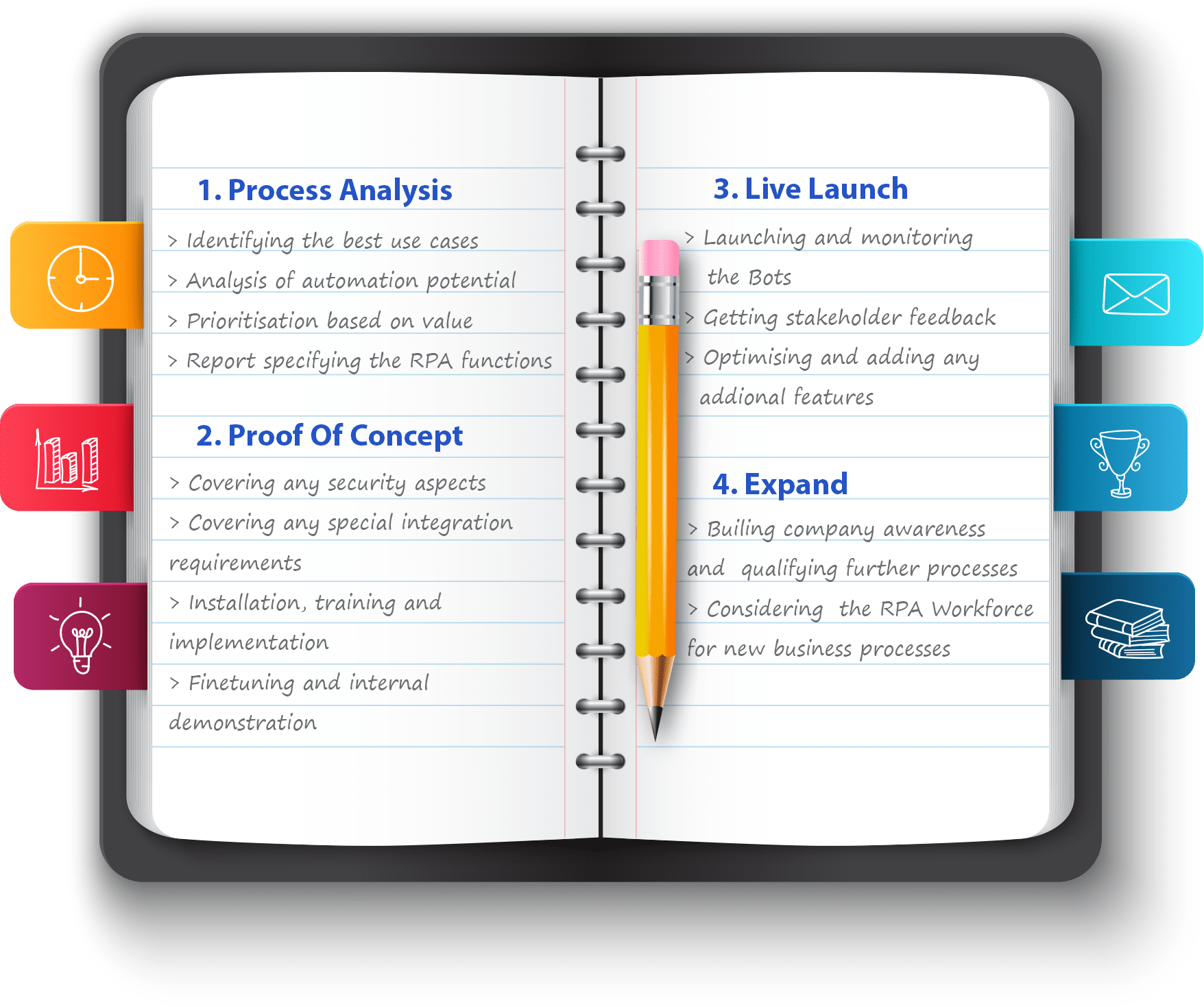Implementing RPA in easy steps

Many people are interested in the benefits of RPA but have no idea about the level of difficulty involved in the implementation of an RPA solution. The most common question asked by our new clients is how much work is involved in setting up an RPA process and can anyone manage it? The answer is, it can require much work at times, especially during implementation, but without a passion for learning, implementing an RPA system will pose a problem.
The critical thing to remember is, by following a plan and taking the right precautions, the process can become straightforward and stress-free. Once your first RPA process is in place, you’ll wonder how you ever managed without it. It’s a bit like installing a dishwasher; every time you load it and push the start button, a wave of satisfaction occurs when you think how much better it is than the alternative!
To provide you with a general understanding of implementing RPA, we’ve created five easy steps you can follow.
Organising an implementation team
In my experience, two to three people conceptualising and implementing an RPA project creates a much smoother process. As a minimum, you will need a staff member who is an IT expert and another who can visualise the process and its desired outcome. Having a third person to support either of these team members is beneficial to speed up completion. Why not more than three people? RPA can be implemented in numerous ways and often without a right or wrong answer. By having fewer people involved in the initial implementation, there are fewer opinions which can delay the process.
Follow a plan
Once you’ve gathered your small team, planning your RPA project is essential to make the process as smooth as possible. 90% of problems do not come from the introduction of the RPA system but rather the behaviour of the system and application you are automating. The implementation team should record each step of the process that is to be automated to help combat any issues. For example, write each action, in order, down on Notepad. For each step of the process, question whether this step is necessary; can this be performed more simply? (think, shortcuts).
After completing each step of the process within your project plan, optimise each step until you are confident it cannot be improved. Depending on the RPA tool you use, you can split these steps into bot actions and define a logic the bot can follow. The good news about implementing a new RPA system is, the project team does not have to cover every tiny detail; through setting up the RPA system, you can adjust small details to rectify errors as they happen.
Implement the plan
Once the plan is in place, the fun can begin. Having a plan will keep the team focused and reduce the number of snags that occur at the beginning of a new project. Depending on what RPA Technology you use, you can record the bot’s actions, test them individually or create a logic to execute them. How long does it take to implement? Based on the complexity of the project, it can range from a few days to a few weeks.
Fine-tuning
After the initial implementation and all the bot’s actions and logic are defined and programmed, you will enter a fine-tuning phase. By letting the bot work on its task, ideally using dummy data or stopping short of fully executing a process, watch for any mistakes. For example, opening an application. We’ve all done it, opened an app and got an error message because it won’t load properly. This is a potential issue the bot will need to handle. In this example, by entering the fine-tuning phase, you can implement logic that can kill the application and try again.
Maintenance
With the initial job done and the RPA system implemented and fine-tuned, the team should now embark on the maintenance phase. The RPA bot will continue to complete its tasks without human interaction but should be monitored to ensure no further errors occur.
By following these steps, your RPA process will be up and running smoothly and efficiently in no time.
If you’re interested in upgrading your workplace and implementing RPA or have some questions, contact us, and we’ll be happy to help.
